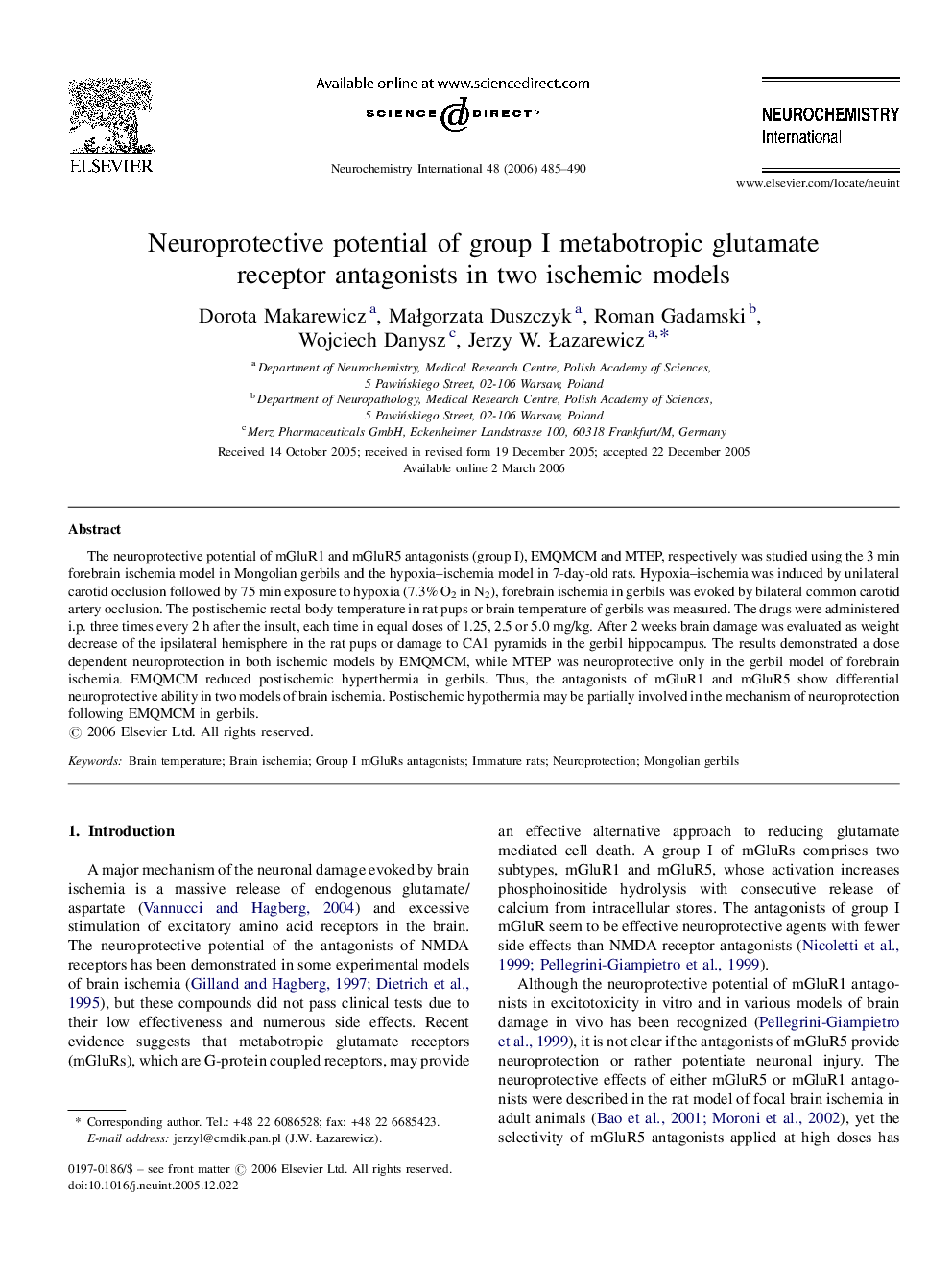| Article ID | Journal | Published Year | Pages | File Type |
|---|---|---|---|---|
| 2202195 | Neurochemistry International | 2006 | 6 Pages |
The neuroprotective potential of mGluR1 and mGluR5 antagonists (group I), EMQMCM and MTEP, respectively was studied using the 3 min forebrain ischemia model in Mongolian gerbils and the hypoxia–ischemia model in 7-day-old rats. Hypoxia–ischemia was induced by unilateral carotid occlusion followed by 75 min exposure to hypoxia (7.3% O2 in N2), forebrain ischemia in gerbils was evoked by bilateral common carotid artery occlusion. The postischemic rectal body temperature in rat pups or brain temperature of gerbils was measured. The drugs were administered i.p. three times every 2 h after the insult, each time in equal doses of 1.25, 2.5 or 5.0 mg/kg. After 2 weeks brain damage was evaluated as weight decrease of the ipsilateral hemisphere in the rat pups or damage to CA1 pyramids in the gerbil hippocampus. The results demonstrated a dose dependent neuroprotection in both ischemic models by EMQMCM, while MTEP was neuroprotective only in the gerbil model of forebrain ischemia. EMQMCM reduced postischemic hyperthermia in gerbils. Thus, the antagonists of mGluR1 and mGluR5 show differential neuroprotective ability in two models of brain ischemia. Postischemic hypothermia may be partially involved in the mechanism of neuroprotection following EMQMCM in gerbils.
